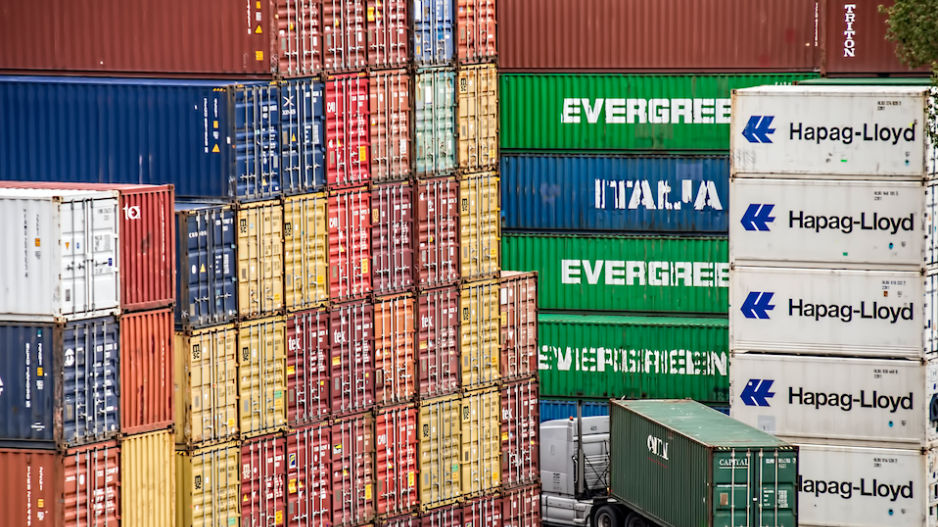The B.C. budget released last month noted that strong export growth helped underpin the province’s healthy economic expansion in 2022 and contributed to the massive upside revenue surprise that enabled the NDP government to juice spending while also posting an operating surplus rather than a deficit for the fiscal year ending March 31.
The value of B.C.’s international merchandise exports jumped almost 20 per cent in the first six months of 2022, before softening over the second half of the year.
For calendar 2022, B.C.’s merchandise exports reached $64.4 billion, up more than $10 billion from the year before. Energy exports soared 56 per cent in 2022. Lumber prices retreated from record levels, resulting in exports of solid wood products falling by more than 10 per cent, while mineral product exports were off by five per cent from 2021 levels.
On the services side, B.C. film and TV production exports continued to grow at a brisk pace. International tourism exports increased again in 2022 but remained well below pre-COVID levels. Other categories of international service exports – including technology services, education services, professional and technical services, and transportation services – also enjoyed decent gains last year.
In inflation-adjusted terms, according to the government’s modelling and forecasts as reported in the budget, the total “real” value of B.C.’s exports of goods and services grew by an estimated 6.3 per cent in 2022. This is more than more than twice the pace in 2021 and also around two times the province’s typical export growth rate. The surge in exports was a key factor in the overall three-per-cent advance in the province’s real GDP last year.
A forthcoming Business Council of B.C. paper examines the structure of B.C.’s export base and the evolution of international exports of both goods and services over the past couple of decades. Summarizing the pattern of growth across the province’s merchandise exports since 2015 provides insight into where B.C. enjoys competitive advantages in both the North American and the wider global contexts.
The total value of B.C. merchandise exports rose by an impressive 82 per cent between 2015 and 2022. Energy products account for a large and growing share of the province’s international exports. In 2022, energy generated a remarkable 37 per cent of British Columbia’s merchandise export revenues, up from just 17 per cent in 2015. This mainly reflects high prices for both natural gas and coal over a good part of last year.
Coal and natural gas dominate B.C.’s foreign energy sales, with coal being the single-largest export. In nominal dollar terms, B.C.’s energy exports surged more than 300 per cent between 2015 and 2022. Wood products constitute the province’s second-largest broad export category, followed by mineral products. Export growth in these sectors has been less stellar than in energy since the mid-2010s. Machinery and equipment products were the fourth-largest source of export revenue last year. The size and growth of export shipments in this sector contribute to B.C.’s diversified export base. Agri-food is among the fastest-growing export categories and has emerged as a key B.C. export sector. All major export sectors except wood products and metallic mineral products yielded higher year-over-year sales receipts in 2022 compared to the prior year, with energy and machinery and equipment posting particularly impressive percentage increases.
Looking at the foreign markets B.C. sells to, there have been only modest changes since 2015. Over the 2015-2022 period, the U.S. remained by far the most important foreign market, accounting for around 55 per cent of all merchandise exports. B.C.’s service exports are also strongly U.S. oriented (tourism, film and TV, professional services, technology), which means the U.S. share of all B.C. exports is even higher than it is in the case of merchandise goods. Other overseas markets also offer attractive opportunities and serve to reinforce the fact that B.C. has a more diversified export base than most other provinces. China is our second-largest export market (around 15 per cent), followed by Japan (about 10 per cent).
B.C. is a small open economy, so policymakers should pay close attention to trade flows. They also need to understand where the province enjoys comparative advantages – with the short answer being that such advantages generally exist in sectors where we already host competitive export clusters. A vital task for government decision-makers is to ensure that public policy broadly supports the continued commercial success and growth of our leading export-oriented industries.
Jock Finlayson is the Business Council of British Columbia’s senior adviser; Ken Peacock is the council’s senior vice-president and chief economist.




